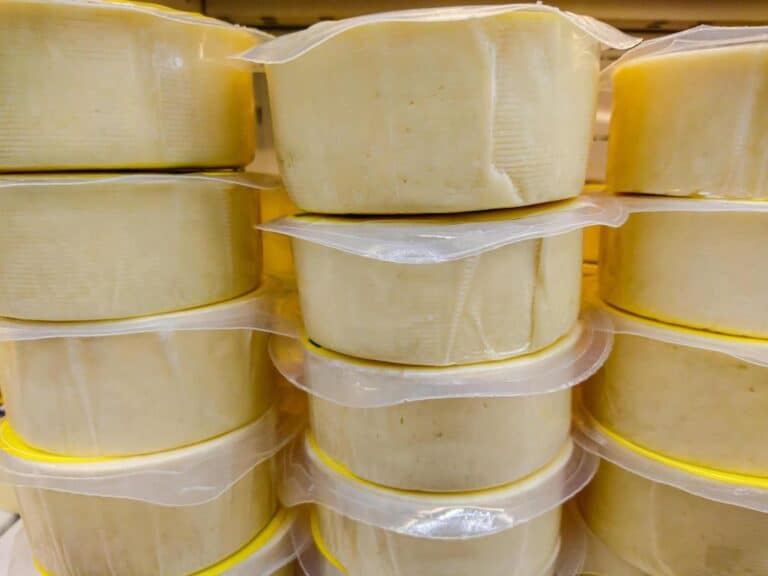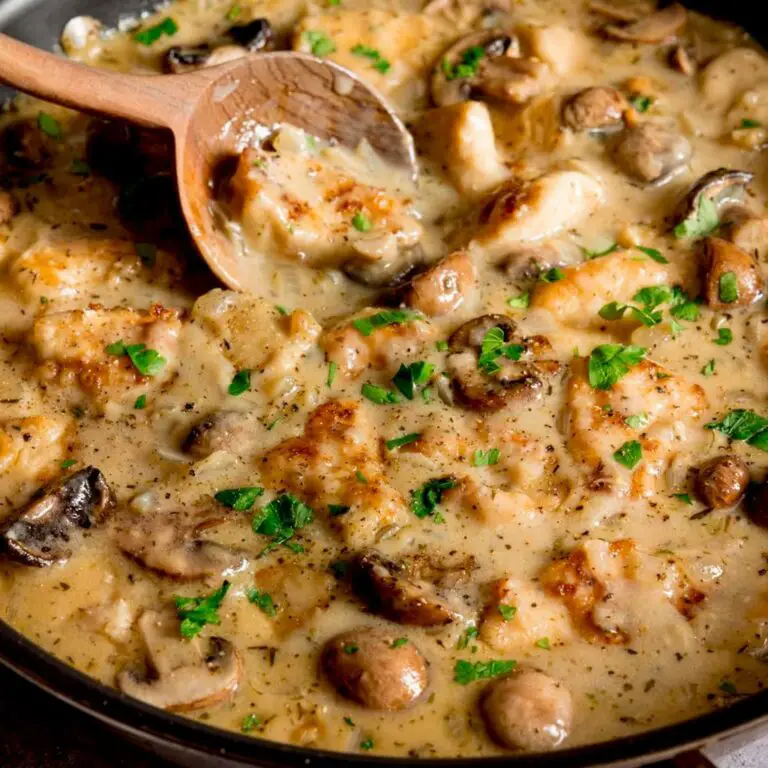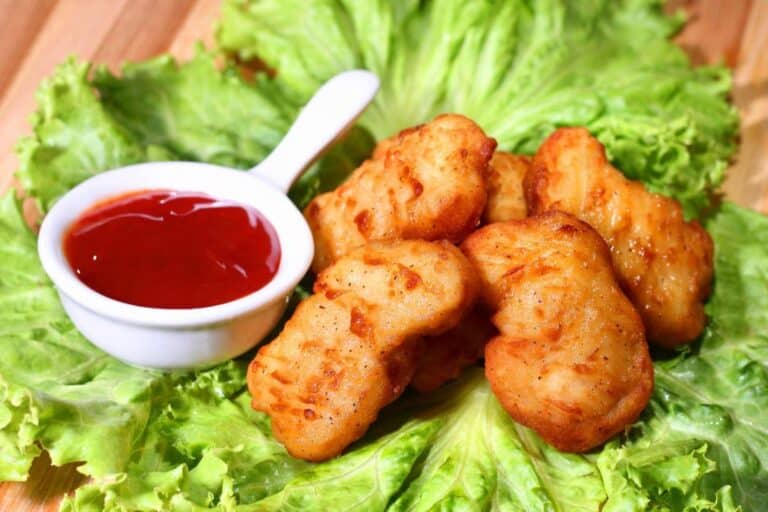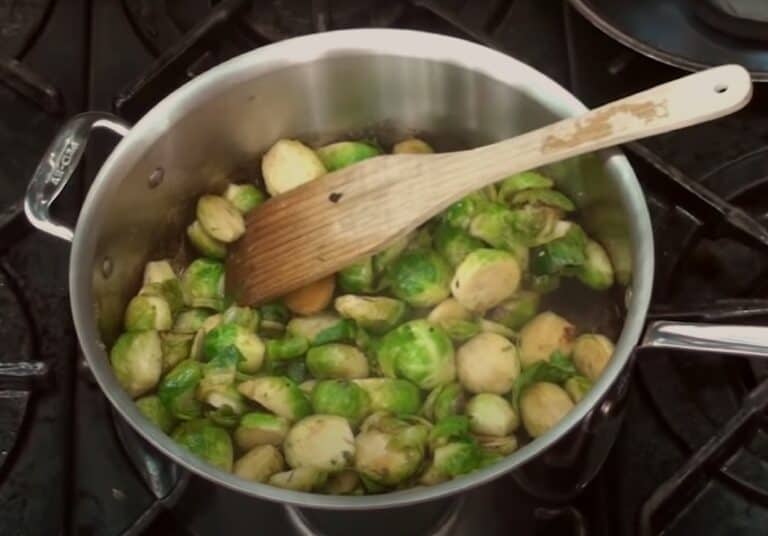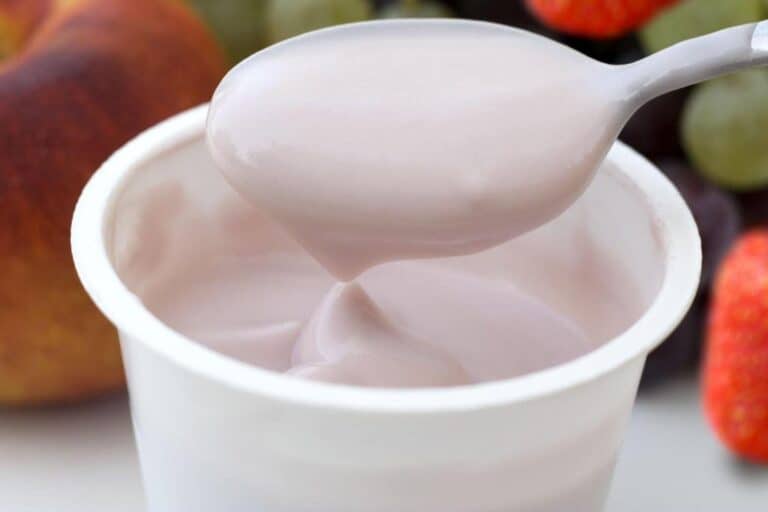Can You Eat Brussels Sprout Stalks? Edible or Not?
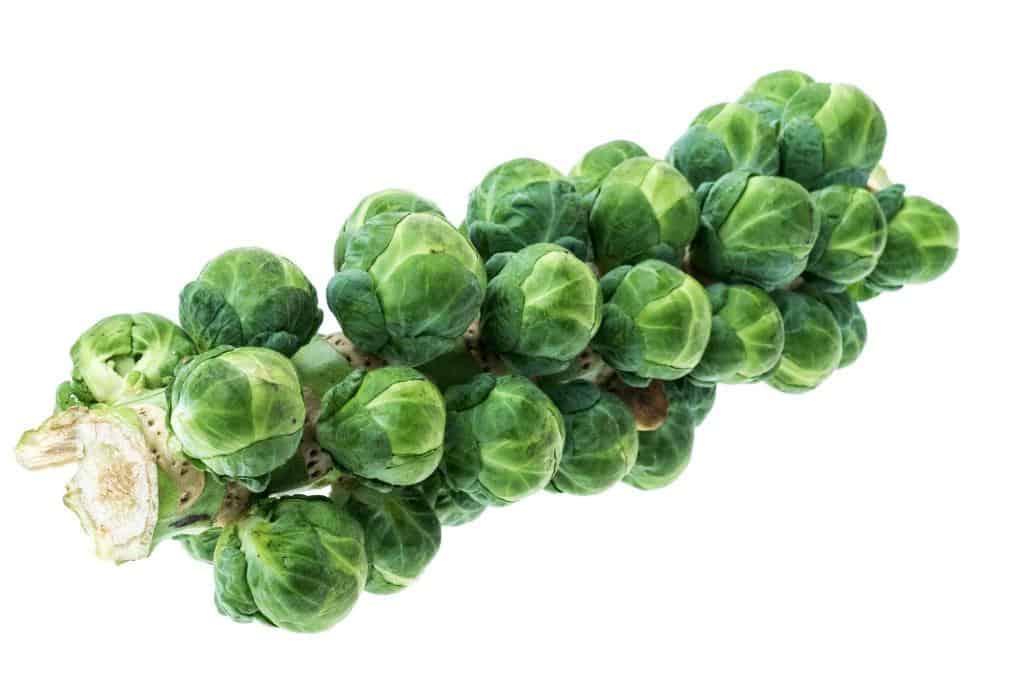
Are you a fan of Brussels sprouts? Those adorable little green orbs that grace our plates during the holiday season. Well, hold on tight, because we’re about to embark on a culinary adventure that might just change the way you look at Brussels sprouts forever.
We all know and love the sprouts themselves, but what about the sturdy stalks on which they grow? Are they edible too? The answer might surprise you. In this article, we’re going to unravel the mystery surrounding Brussels sprout stalks. We’ll explore their versatility in the kitchen, reveal the truth about their edibility, and even share some mouthwatering recipes that will make you rethink tossing them aside.
So, grab your apron and prepare to discover a whole new world of flavor and creativity. Can you eat Brussels sprout stalks? Let’s find out together!/
Can You Eat Brussels Sprout Stalks?
Yes, you can indeed eat Brussels sprout stalks as part of your culinary experience. The stalks are edible, from the leaves on top to the round buds on the stem. Don’t let any part of this vegetable go to waste!
However, it’s worth noting that the stalks have a sturdy texture compared to the tender sprouts. It’s important to note that the stalks refer to the tender core of the Brussels sprout plant, not the woody and inedible parts. They require a bit more cooking time to achieve a desirable tenderness. To make the most of their flavor and texture, it is recommended to cook them a little longer, allowing them to soften up and become more palatable.
One fascinating way to savor these stalks is by creating oven-roasted Brussels sprout masterpieces. With a touch of culinary creativity, you can transform these sturdy stalks into a delectable dish. Whether roasted with a medley of spices or paired with complementary ingredients, Brussels sprout stalks offer a unique and exciting twist to your culinary repertoire.
So, the next time you come across Brussels sprouts with their intact stalks, remember that you have a culinary canvas in your hands. Embrace the opportunity to explore their edible potential, and discover the rich flavors and textures that lie within the often-overlooked parts of this remarkable vegetable.
Nutritional Composition of Brussels Sprout Stalks
Brussels sprout stalks offer a range of essential nutrients that can contribute to a healthy diet. They are rich in macronutrients like fiber, protein, and carbohydrates. Moreover, they provide a plethora of micronutrients such as vitamin C, vitamin K, folate, and potassium.
Compared to the sprouts themselves, the stalks have a slightly lower concentration of certain vitamins and minerals, but they still offer significant nutritional value. Consuming Brussels sprout stalks can support immune function, aid digestion, and promote overall well-being.
Table: Nutritional Value of Brussels Sprout Stalks
Cooking with Brussels Sprout Stalks

Now that you have your Brussels sprout stalks ready, let’s explore some delectable ways to incorporate them into your meals:
1. Roasted Brussels Sprout Stalks
Roasting Brussels sprout stalks is a simple yet delicious way to enjoy their unique flavor and texture. Here’s how to do it:
- Preheat your oven to 400°F (200°C).
- Cut the stalk into smaller, manageable pieces.
- Toss the stalk pieces with olive oil, salt, and your favorite seasonings.
- Spread the stalk pieces in a single layer on a baking sheet.
- Roast for about 20-25 minutes, or until the stalks are tender and slightly caramelized.
- Serve as a side dish or a healthy snack.
2. Stir-Fried Brussels Sprout Stalks
Stir-frying is another excellent method to cook Brussels sprout stalks quickly while retaining their crunch. Follow these steps for a flavorful stir-fried dish:
- Cut the stalk into thin, bite-sized pieces.
- Heat a tablespoon of oil in a wok or large skillet over medium-high heat.
- Add minced garlic and ginger to the hot oil and stir-fry for about 30 seconds until fragrant.
- Add the Brussels sprout stalk pieces to the wok and stir-fry for 3-4 minutes until they start to soften slightly.
- Season with soy sauce, a pinch of sugar, and your choice of spices or herbs.
- Continue stir-frying for another 2-3 minutes until the stalks are crisp-tender.
- Serve the stir-fried Brussels sprout stalks as a side dish or as a tasty addition to a stir-fry with other vegetables and protein.
3. Brussels Sprout Stalk Slaw
Brussels sprout stalks can also be used as a unique twist on traditional coleslaw. Here’s how to make a refreshing Brussels sprout stalk slaw:
- Shred the Brussels sprout stalk using a food processor or a sharp knife.
- In a bowl, combine the shredded stalk with shredded carrots, thinly sliced red cabbage, and any other desired vegetables.
- In a separate bowl, whisk together mayonnaise, apple cider vinegar, honey, and a pinch of salt and pepper to create the dressing.
- Pour the dressing over the vegetable mixture and toss until well coated.
- Let the slaw sit in the refrigerator for at least 30 minutes to allow the flavors to meld.
- Serve the Brussels sprout stalk slaw as a side dish or as a topping for sandwiches or tacos.
Go over: What Factors Contribute to the Higher Cost of Brussels Sprouts?
Culinary Uses of Brussels Sprout Stalks
Brussels sprout stalks have a diverse range of culinary applications. Traditionally, the stalks were often discarded or used as animal feed. However, modern chefs and home cooks have discovered creative ways to incorporate them into delicious recipes.
The stalks can be used in stir-fries, roasted as a side dish, or even pickled for added tanginess. They add a unique flavor profile to dishes, with a mild and slightly sweet taste. When cooked, the stalks have a tender yet crunchy texture, making them a delightful addition to various culinary creations.
Here are some popular recipes that feature Brussels sprout stalks:
- Brussels Sprout Stalk Salad with Lemon Vinaigrette
- Roasted Brussels Sprout Stalk Medley with Herbs and Garlic
- Brussels Sprout Stalk Stir-Fry with Ginger and Soy Sauce
- Brussels Sprout Stalk Salad with Lemon Vinaigrette
- Roasted Brussels Sprout Stalk Medley with Herbs and Garlic
- Brussels Sprout Stalk Stir-Fry with Ginger and Soy Sauce
To prepare Brussels sprout stalks, start by removing the sprouts themselves. Then, trim the outer layer of the stalk to reveal the tender core. Cut the stalk into smaller, manageable pieces and remove any tough or woody portions. Rinse the stalks thoroughly to remove any dirt or debris. They are now ready to be used in your favorite recipes.
Harvesting and Preparing Brussels Sprout Stalks
For optimal taste and texture, it is important to harvest Brussels sprout stalks at the right time. The best time to harvest is when the sprouts are fully developed but still tightly closed. This ensures that the stalks are tender and flavorful. To harvest the stalks, cut them close to the base of the plant using a sharp knife or shears. Be careful not to damage neighboring sprouts or the main stem of the plant.
After harvesting, proper handling and storage are essential to maintaining the quality of the stalks. Trim the cut ends of the stalks and place them in a plastic bag or airtight container. To keep the sprouts fresh, you need to store them in the refrigerator, where they can remain fresh for up to a week. If you have an excess of stalks, you can blanch and freeze them for later use. This allows you to enjoy their goodness even when they are out of season.
Safety and Precautions When Eating Brussels Sprout Stalks
While Brussels sprout stalks are generally safe to eat, it’s important to be aware of potential allergies or sensitivities. Some individuals may have allergic reactions to certain vegetables, including Brussels sprouts. If you experience symptoms such as itching, swelling, or difficulty breathing after consuming Brussels sprout stalks, it is advisable to consult a healthcare professional.
Another consideration is pesticide and chemical residue. To minimize exposure to pesticides and chemical residues, opt for organically grown Brussels sprouts whenever possible. Organic farming practices prioritize the use of natural fertilizers and pest control methods, reducing the risk of chemical contamination.
Before consuming Brussels sprout stalks, it is crucial to properly clean and wash Brussels sprouts before cutting to remove any dirt, bacteria, or residual pesticides. Start by rinsing the stalks under cold, running water.
You can use a vegetable brush to gently scrub the surface to ensure thorough cleaning. If desired, you can soak the stalks in a mixture of water and vinegar or lemon juice for a few minutes to further eliminate any potential contaminants. Rinse them again under running water and pat them dry before incorporating them into your recipes.
By following these safety precautions and proper cleaning techniques, you can enjoy Brussels sprout stalks while minimizing potential health risks.
Common Misconceptions about Brussels Sprout Stalks
There are several misconceptions surrounding the edibility of Brussels sprout stalks. Let’s address some of the most common concerns:
- Taste: Contrary to popular belief, Brussels sprout stalks have a milder and sweeter flavor compared to the sprouts themselves. When properly prepared, they can be deliciously tender and offer a delightful crunch.
- Texture: While the outer layers of the stalk may be tough and fibrous, the inner core is tender and suitable for consumption. By removing the outer layers and preparing the core properly, you can enjoy a pleasant texture similar to other stalk vegetables.
- Digestibility: Some individuals worry that consuming Brussels sprout stalks may lead to digestive issues. However, when cooked or prepared correctly, the stalks are easily digestible and can be enjoyed without any adverse effects.
- Nutritional Value: It is often assumed that the Brussels sprout stalks lack nutritional value compared to the sprouts themselves. However, the stalks are packed with nutrients such as fiber, vitamin C, vitamin K, and antioxidants. Including the stalks in your meals can contribute to a well-rounded and nutritious diet.
- Cooking Time: Some people believe that cooking Brussels sprout stalks requires an extended amount of time, making them inconvenient to prepare. However, with proper slicing and cooking techniques, the stalks can be cooked in a reasonable amount of time, just like other vegetables. By cutting the stalks into smaller, manageable pieces, they will cook evenly and become tender.
- Versatility: Another misconception is that Brussels sprout stalks have limited culinary uses. On the contrary, they can be utilized in various recipes, from salads and stir-fries to roasted dishes and even as a flavorful addition to soups and stews. Their unique texture and mild flavor make them a versatile ingredient to experiment with in the kitchen.
- Difficulty in Preparation: Some individuals shy away from using Brussels sprout stalks due to the perceived difficulty in preparation. While it is true that the outer layers of the stalk can be tough and require removal, the process can be simplified by using a knife to trim away the tough outer layers, revealing the tender core. Once the stalks are properly trimmed, they can be sliced, diced, or used in whole form, depending on the desired recipe.
Conclusion
In conclusion, Brussels sprout stalks are indeed edible and offer a range of culinary, environmental, and creative possibilities. By incorporating them into our meals, we contribute to sustainability efforts by reducing food waste and embracing a zero-waste lifestyle. Additionally, exploring alternative uses for the stalks opens doors to innovative applications in various industries.
So, the next time you enjoy Brussels sprouts, don’t forget to consider the stalks as a valuable part of the plant. With their unique flavor, nutritional benefits, and positive environmental impact, Brussels sprout stalks have the potential to elevate your culinary experiences and contribute to a more sustainable future. Embrace this edible treasure and let its versatility inspire you in the kitchen and beyond.
FAQs
How do you prepare Brussels sprout stalks for cooking?
To prepare Brussels sprout stalks for cooking, start by cutting the stalk near the base of the plant and removing the individual sprouts. Trim off any dry or damaged parts of the stalk and rinse it thoroughly under running water to remove dirt and debris. From there, you can cut the stalk into smaller pieces for roasting or stir-frying, or shred it for slaws and salads.
Are Brussels sprout stalks safe to eat raw?
While Brussels sprout stalks are generally safe to eat raw, they can be quite fibrous and tough. If you prefer a softer texture, it’s best to cook or blanch them briefly before consuming. Cooking also helps enhance their flavor.
Can you freeze Brussels sprout stalks for later use?
Yes, you can freeze Brussels sprout stalks for later use. Simply cut the stalk into manageable pieces and blanch them in boiling water for a few minutes. Plunge them into ice water to cool, pat them dry, and pack them into freezer-safe bags or containers. Properly frozen, they can last for several months.
How do you know if Brussels sprout stalks are fresh and of good quality?
To determine if Brussels sprout stalks are fresh and of good quality, look for stalks that are firm and have tightly packed sprouts. Avoid stalks that are soft or have loose or yellowed sprouts. The sprouts should be bright green and compact. Trust your senses; they should have a fresh, earthy scent. It’s always best to choose stalks that are in season for optimal freshness.
Can you compost Brussels sprout stalks?
Yes, you can compost Brussels sprout stalks. They are organic matter and can contribute to nutrient-rich compost. Cut the stalk into smaller pieces to facilitate decomposition, and add them to your compost pile along with other vegetable scraps and yard waste. Over time, the stalks will break down and contribute to the nutrient cycle in your garden.
What are some alternative uses for Brussels sprout stalks?
Brussels sprout stalks have alternative uses beyond culinary purposes. They can be used as natural decorations, particularly during the holiday season. Hang them on doors or walls, or incorporate them into wreaths and floral arrangements. The sturdy stalks can also serve as plant stakes or supports in the garden. Get creative and repurpose them in crafts or DIY projects to add a unique touch to your home decor.

